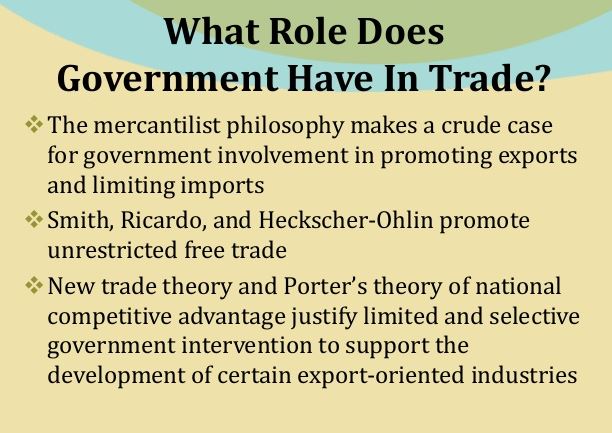International Law and Globalization
Apple Company is a US base incorporation incorporated in the US in the year 1976 by Steve jobs. Ever since then Apple Company has witnessed huge milestones in its production, distribution, and marketing of its electronic device majorly the apple phones (Johnson, Phan, Singer & Trinh, 2012). Currently, Apple Company is one of the largest us based companies listed on the stock exchange contributing significantly to the US GDP. Its forms one of the largest multinational companies offering the highest job opportunities both locally and internationally. The company has offered more than 60,000 jobs globally for both full time and part time.
International roles of Apple Company
Customarily, business is expected to deliver or play some roles in the economy. Some of the roles may be economical or social functions. Companies are to structure their overall operation to ensure that the end product of it all defines their contribution to the international business globally. Consequently, Apple Company is not an exceptions or immune to this role. It has to ensure that its functions in the international business by involving herself in various activities that benefit the global trade through its interplay with various economic factors. The discussed under are some of the roles of Apple Company in the international business.
Export promotion. Apple Company has expanded exports to many countries in which it has established its production processes. The apple come has established its production in many countries especially those countries from Asia. The key player comes from Irish and China. Reports and researches assessing the contribution of this on exports of these countries are astounding. It indicates that, for instance, China has mostly benefited from exports of apple products contributing to at least 8% on China’s GDP.
The same spill overs have passed on to other countries in which Apple have established its main production activities. This forms one of the primary roles of the company to support the trade activities of those countries in which they are operating in. In this way, Apple Company has played a major role in international business through export promotion.
Job creation. Apple Company is one of the largest giant multinational companies which have massively created thousands of job opportunities. Apple Company has over 700 production operations across the world. Statistics shows that the company has offered over 60,000 job opportunities globally either directly and indirectly. These jobs are provided either through their factory outlets or through their middlemen and intermediaries who are strategically situated in the various countries.
Revenue creation. Apple Company has largely contributed revenue generation of many countries. When companies operate in the international arena, they are subject to tax payment and other reparation laws which ensure that a certain percentage of revenues generated in those countries are retained and locally promote local activities. Apple has paid millions of taxes to these countries which have helped local people to enhance their lives through productive activities. (Hutt 2017)
Cultivation and promotion of innovation. This is one of the key roles they the company has played in the international business. When it comes to innovation, Apple Company stands conspicuous from the rest of other electronic or mobile phones producers. The company has the culture of developing and promoting innovations throughout its production process. This has led the company to win many global trophies as a leader of global innovation. Studies indicated that the company is strategically studying the markets niche and satisfactory innovating products which satisfy those needs. This innovation is not constrained in their key factory outlets, but it has diffused globally contributing to more innovation into the global business.
Enhance improvement in global supply chains. Apple Company has come up with one of the best supply chains in their marketing strategies. Customary, Apple Company does outsource their raw materials from many countries outside us. This means that they need to have proper supply and delivery channel that ensures that raw material is moved on time to production sites.
In the same way, such channels should ensure that products are moved and delivered to customers on time. In facts, Apple boost of the most efficient supply channels in the international business which other companies globally have adapted to in their supply chains.
Environmental protection role. Apple has had significant role in the international business environment. The company has come up with major policies that ensure the sustainability of the environment. This has involved low carbon emission policies that have ensured the company uses low carbon means like solar power plant to run their factories.
Effects of international laws on apple company operation
Globalization comes with the internationalization of business. Consequently, when businesses start trading internationally, they operate in different countries with varying jurisdiction and laws. In this way they are to ensure that they abide by those laws fully and in case they violate them, they are prosecuted, and sometimes their operations are shutdown. International laws have the ability to promote or totally dismantle business operations of a company which violates them. The discussed below are some of the effects of international laws effects on the operation of the apple company (Chan, Pun, & Selden, 2013).
International Taxation laws and effects on Apple performance. In the year 2016, the European Court ordered Apple Company to pay close to $14.5billion of tax the penalty to Irish government (Hunt 2017) The court held that the Irish government violated international tax law by meddling tax laws to favour Apple Company which resulted to the company pay less tax to Irish government (Heckemeyer & Overesch, 2013).
Also, the court ruled that Apple Company had not paid the entire required tax amount and other revenues from sales they had made in 20-14 and 2003. Such tax laws are just reducing the Apple’s operations in the international business as it has ended up suffering one of the largest financial losses ever. International tax laws have the ability to limit Apple operating activities. Apple has had in past major corrosive effects that resulted from tax avoidance in the United States.
This leads the company to pay in millions of money as the Senate ruling indicated that the company had strategically formulated strategies that they use to avoid tax. This too has affected the profitability margin of Apple Company. Responding to the Europeans Commission ruling in taxes, the chief executive officer of Apple Company warned that were likely to reduce their operations in Ireland risking over 1.5 million jobs in entire Europe. The effects of such international laws are simply just to reduce business operations.

International labour laws and the effects on Apple Company business. These are laws that are internationally accepted by all countries and which ensures employees’ rights are protected, and their work environment is safe. Occasionally, Apple Company has found itself in conflict with such laws when engaging with employees. In the year 2012, apple industry outlet located in China, Foxconn, was reported to have engaged minors as workers (Duhigg & Barboza 2012).
The company employed children and students in their factories which are against international labor laws. Several other employee cases have been lodged in the courts on claims of proper working conditions as well as employees being forced to work overtime. Violation of such international laws directly damages the reputation of a giant company like Apple (Sandoval 2013).
In 2014, Apple, Google, and Intel were fined $324 million in laws suits. Frequent labor laws have negative effects of damaging Apple reputation and stakeholders too. Regular penalties only have hindering effects on the performance of the Apple Company (Hunt 2017).
Approaches to global politics – Realistic approach
The approach is based on the premise that each country is seen to be in fight for its position in global arena while each is advancing its interests. In this way, a country will consequently reign supremacy over its borders and population. The states are seen as seemingly guarded against invertible threats against the freedom of its people and encroachment of potential threats on its borders (Gilpin 2011).
Under this approach, the attainment of economics, as well as the mobilization of economic power, is viewed as marshalling power over its borders. The main facets of realism include mercantilism, ethno nationalism, colonialism, and neo-colonialism. Colonialism is viewed as a major precursor to globalization while mercantilism is the smooth approach that promotes establishment of industries through subsidizing them and protecting them from international competition (Gilpin 2011).
Mercantilists advocates for free trade to enhance the realization of an end to political struggle. Realists presume of an international state structure as progressively more revolutionary, and they assume that all countries work in attaining their parochial interest. The approach characterizes international politics as being power centered focusing on power balance, and eventually, that war is unavoidable in the international states system (Baylis, Smith & Owens, 2013). The main advantage of realism is that it prioritized state political supremacy over an individual and that state should be the key player
Liberalism approach
Primarily, the liberalism approach to global politics seeks spreading of democratic as well as economic power to necessities the true picture of globalization. The approach also advocates for an economic path for a true realization of one economic and cultural global political order. Liberals fall out that a great room exists for collaboration and gain for all countries in international state politics. Also, liberalism unmoving believes that countries can still work from mutual benefits and avoid international politics (Baylis, Smith & Owens, 2013).
Liberalism can be traced about 200 hundred years ago to economic philosophers Adam Smith and David Ricardo. Liberalism has thrived in fame in the aftermath of World War 1 and world war 11. Even though limits have resulted in the incapability of liberalism to put up with the fruit that it so dynamically argued. Liberals’ mainly important role is based on the notion asserting that all accomplices in an organization of free trade markets are beneficiary (Baylis, Smith & Owens, 2013).
The main advantage of liberal is the advocacy of free trade in international political arena. They argue that little political restriction will automatically cause the trading parties to gain mutually. The second aspect here is that realism advocate and strongly prefers an individual to state politics. In global world, protectionism is necessary; this forms one as the major advantage of liberal as it vehemently fights against protectionism.
Use of globalization at Apple Company
Global outsourcing. Apple has applied outsourcing significantly to enhance its production. The company has its head office in the United States which is a nonmanufacturing office. Productions are located in Europe and Asia. The company does outsource it critical production raw, materials from many countries to their assembling plant globally. This is one of the key utilization of globalization by the apple company. Employees and innovators have also been outsourced globally as a result of globalization in trade laws and practices. Aided by globalization, Apple Company has been able to cut the high cost of production in the United States by strategically setting their operations in countries where production cost is low (Borrus & Zysman, 1997).
Apple has used the effects of globalization to establish one of the best online retail shops. Their customers can purchase company’s product all over the world with no limitation to geographical distance and be delivered to them on time. These online stores and websites can be translated into different languages for everybody who wishes to transact with the company.
The company has also structured its production process to move in line with globalization. The supply chains and value chains developed have been used to ensure that The Company remains competitive in global market. Globalization has also been used to do market segmentation and various market strategies by Apple Company. Through globalization, Apple Company can easily now segment international market for profitable returns and consistently shy away from those markets with low profits or markets which are risky.
Conclusion
It is clear crystal that Apple Company has grown over the years to be one of the world’s giants businesses globally. The company has set up its operational internationally in many strategic countries. By going international, Apple Company has been forced to operate within international trade laws which prescribed the nature of and ways in which accompany ought to conduct business at international levels. Such laws which have affected apples international business include tax laws, labor rational laws as well environmental laws. The major roles of Apple Company in international business include export promotion, job creation, and revenue generation among many others. Strategically, Apple Company has been affected by global business in areas such as outsourcing, redesign of supply chains, and establishment of online business among many others.
References
Baylis, J., Smith, S. and Owens, P., 2013. The globalization of world politics: an introduction to international relations. Oxford University Press.
Gilpin, R., 2011. Global political economy: Understanding the international economic order. Princeton University Press.
Sandoval, M., 2013. Foxconned Labour as the Dark Side of the Information Age: Working Conditions at Apple’s Contract Manufacturers in China.
Johnson, K., Li, Y., Phan, H., Singer, J. and Trinh, H., 2012. The Innovative Success that is Apple, Inc.
Duhigg, C. and Barboza, D., 2012. In China, human costs are built into an iPad. New York Times, 25.
Linden, G., Dedrick, J. and Kraemer, K.L., 2011. Innovation and job creation in a global economy: the case of Apple’s iPod. Journal of International Commerce and Economics, 3(1), pp.223-239.
Licht, Tine R., Max Hansen, Anders Bergström, Morten Poulsen, Britta N. Krath, Jaroslaw Markowski, Lars O. Dragsted, and Andrea Wilcks. “Effects of apples and specific apple components on the cecal environment of conventional rats: role of apple pectin.” BMC microbiology 10, no. 1 (2010): 13.
Heckemeyer, J. and Overesch, M., 2013. Multinationals’ profit response to tax differentials: Effect size and shifting channels.
Smith, J., 2012. The GDP illusion: value added versus value capture. Monthly Review, 64(3), p.86.
Chan, J., Pun, N. and Selden, M., 2013. The politics of global production: Apple, Foxconn and China’s new working class. New Technology, Work and Employment, 28(2), pp.100-115.
Borrus, M. and Zysman, J., 1997. Globalization with borders: The rise of Wintelism as the future of global competition. Industry and innovation, 4(2), pp.141-166.
Hunt, Elle. “Apple Paid No Tax In New Zealand For At Least A Decade, Reports Say”. The Guardian. N.p., 2017. Web. 29 Mar. 2017.
Other Relevant Blog Posts
Did you find any useful knowledge relating to international law and how it affects Apple in this post? What are the key facts that grabbed your attention? Let us know in the comments. Thank you.




